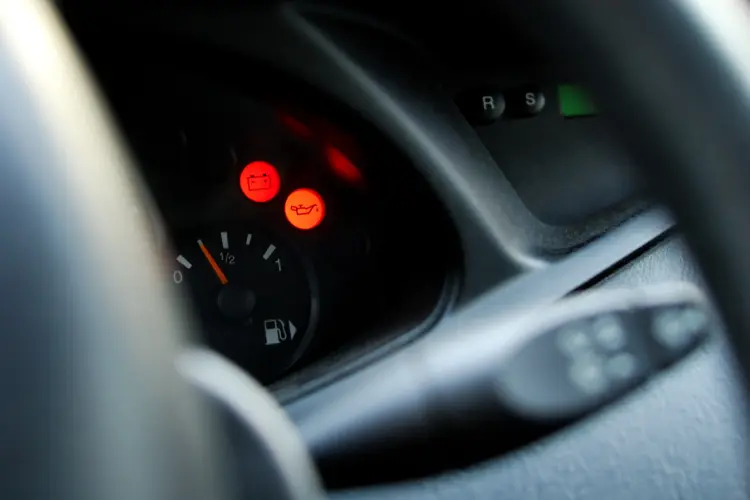What To Do When Your Oil Light Comes On
red & yellow oil light
5,576Your vehicle’s oil-pressure warning light is one of the most critical alerts on your dashboard. Unlike a check-engine light, which covers a broad range of systems, the oil light specifically signals trouble with engine lubrication—your engine’s lifeblood. Ignoring it can lead to severe, costly damage. Here’s what to do, how to interpret yellow vs. red oil lights, and where to learn more from trusted sources.

Yellow Light vs. Red Light: Know the Difference
- Yellow (Amber) Oil Light
Indicates a moderate drop in oil pressure or a sensor warning. You can usually drive a short distance (e.g., to a safe spot or service station) but should address the issue promptly. - Red Oil Light
Signals critically low oil pressure. Stop driving immediately and shut off the engine to prevent catastrophic damage like seized bearings or a ruined crankshaft.
🔗 Car and Driver: Dashboard Warning Lights Guide
1. Pull Over Safely
At the first sign of a red oil light—or if the yellow light stays on—slow down, turn on your hazard lights, and find a level, secure location to stop. Shutting off the engine quickly under red-light conditions can save you thousands in repair costs.
2. Check Your Oil Level
- Pop the hood and locate the dipstick.
- Wipe it clean, reinsert fully, then remove and read:
- Below “Low”: Add oil immediately.
- Between “Low” and “Full”: Level is acceptable; the issue may be pressure-related.
- Use the oil grade recommended by your manufacturer—often 5W-30 or 0W-20.
🔗 Mobil 1: Find the Right Oil and Filter
3. Inspect for Leaks & Smells
While the engine is off and cool, look under the car for fresh oil drips or puddles. Check around:
- Oil pan gasket
- Filter housing
- Hoses and seals
Also note any burnt-oil odors under the hood, which can indicate oil spilling onto hot components.
🔗 KBB: Vehicle Maintenance Tips
4. Restart & Monitor the Light
After adding oil, restart the engine and watch the dash:
- Yellow light off: You’ve likely restored safe pressure—drive gently to a service center.
- Yellow light on or red light returns: Shut off the engine immediately; have your vehicle towed to avoid damage.
5. Seek Professional Diagnosis
If the light persists, an ASE-certified technician will:
- Perform an oil-pressure test to verify pump performance
- Inspect the pressure sensor and wiring for faults
- Locate and repair gasket or seal leaks
Trust only qualified shops—using uncertified mechanics can risk warranty coverage and lead to misdiagnosis.
6. Prevent Future Emergencies
- Monthly Oil Checks: Even if you drive mostly highway miles.
- Scheduled Oil Changes: Follow intervals in your owner’s manual (typically every 5,000–10,000 miles).
- Use Quality Filters & Fluids: OEM or equivalent parts protect seals and sensors.
- Monitor Engine Performance: Unusual noises, vibrations, or heat spikes can hint at lubrication issues.
🔗 Car Care Council: Maintenance Basics
Bottom Line:
Your oil light is a serious warning—treat yellow alerts as invitations to check levels and leaks, and red alerts as commands to stop and call a professional. With prompt action and regular maintenance, you’ll protect your engine, your wallet, and any warranty you’ve invested in.
TL;DR: When your oil-pressure light glows—amber for a warning or red for a critical alert—you need to act fast to protect your engine. In this post, you’ll learn what to do if your oil light suddenly comes on, and interpret yellow vs. red alerts. Plus, we’ll link you to expert resources so you can diagnose, repair, and prevent future oil-pressure emergencies with confidence.
— Demetrius McGee
